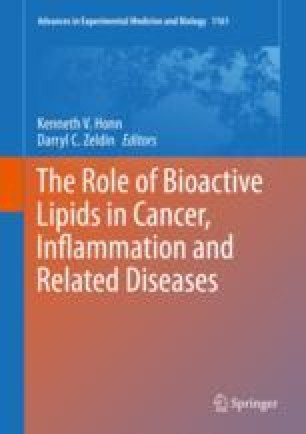 “Accumulating evidence suggests that diets rich in ω-3 polyunsaturated fatty acids (PUFAs) offer protection against vascular inflammation, neuroinflammation, hypertension, and thrombosis.
“Accumulating evidence suggests that diets rich in ω-3 polyunsaturated fatty acids (PUFAs) offer protection against vascular inflammation, neuroinflammation, hypertension, and thrombosis.
Recently, biochemical studies have demonstrated that these benefits are partially mediated by their conversion to ω-3 endocannabinoid epoxide metabolites. These lipid metabolites originate from the epoxidation of ω-3 endocannabinoids, docosahexanoyl ethanolamide (DHEA) and eicosapentaenoyl ethanolamide (EPEA) by cytochrome P450 (CYP) epoxygenases to form epoxydocosapentaenoic acid-ethanolamides (EDP-EAs) and epoxyeicosatetraenoic acid-ethanolamides (EEQ-EAs), respectively.
The EDP-EAs and EEQ-EAs are endogenously produced in rat brain and peripheral organs. Additionally, EDP-EAs and EEQ-EAs dose-dependently decrease pro-inflammatory IL-6 cytokine and increased anti-inflammatory IL-10 cytokine. Furthermore, the EEQ-EAs and EDP-EAs attenuate angiogenesis and cell migration in cancer cells, induce vasodilation in bovine coronary arteries, and reciprocally regulate platelet aggregation in washed human platelets.
Taken together, the ω-3 endocannabinoid epoxides represent a new class of dual acting molecules that display unique pharmacological properties.”
https://www.ncbi.nlm.nih.gov/pubmed/31562632
https://link.springer.com/chapter/10.1007%2F978-3-030-21735-8_17

 “Patients with ulcerative colitis (UC) using marijuana have been reported to experience symptomatic benefit.
“Patients with ulcerative colitis (UC) using marijuana have been reported to experience symptomatic benefit.
 “The
“The  “HIV-associated neurocognitive disorder (HAND) affects nearly half of all HIV-infected individuals. Synaptodendritic damage correlates with neurocognitive decline in HAND, and many studies have demonstrated that HIV-induced neuronal injury results from excitotoxic and inflammatory mechanisms.
“HIV-associated neurocognitive disorder (HAND) affects nearly half of all HIV-infected individuals. Synaptodendritic damage correlates with neurocognitive decline in HAND, and many studies have demonstrated that HIV-induced neuronal injury results from excitotoxic and inflammatory mechanisms. “Neutrophil trafficking into damaged or infected tissues is essential for the initiation of inflammation, clearance of pathogens and damaged cells, and ultimately tissue repair. Neutrophil recruitment is highly dependent on the stepwise induction of adhesion molecules and promigratory chemokines and cytokines.
“Neutrophil trafficking into damaged or infected tissues is essential for the initiation of inflammation, clearance of pathogens and damaged cells, and ultimately tissue repair. Neutrophil recruitment is highly dependent on the stepwise induction of adhesion molecules and promigratory chemokines and cytokines. “Cannabis, a drug made up of the flowers and buds of the Cannabis sativa plant, has been used therapeutically for centuries. Ancient Chinese cultures have reported use in their medical practices, dating back as early as 2700 BC. Although widely used recreationally during the 19th and 20th centuries, the use of medical cannabis has exploded over the last decade, as a result of mainstream cultural acceptance and legalization in several countries around the world.
“Cannabis, a drug made up of the flowers and buds of the Cannabis sativa plant, has been used therapeutically for centuries. Ancient Chinese cultures have reported use in their medical practices, dating back as early as 2700 BC. Although widely used recreationally during the 19th and 20th centuries, the use of medical cannabis has exploded over the last decade, as a result of mainstream cultural acceptance and legalization in several countries around the world. “Depression is a well-recognised effect of long-term treatment with interferon-alpha (IFN-α), a widely used treatment for chronic viral hepatitis and malignancy. In addition to the emotional disturbances, high incidences of painful symptoms such as headache and joint pain have also been reported following IFN-α treatment.
“Depression is a well-recognised effect of long-term treatment with interferon-alpha (IFN-α), a widely used treatment for chronic viral hepatitis and malignancy. In addition to the emotional disturbances, high incidences of painful symptoms such as headache and joint pain have also been reported following IFN-α treatment. “Multiple sclerosis (MS) is a chronic and disabling disorder of the central nervous system (CNS) characterized by neuroinflammation leading to demyelination.
“Multiple sclerosis (MS) is a chronic and disabling disorder of the central nervous system (CNS) characterized by neuroinflammation leading to demyelination. “Chronic allograft dysfunction (CAD), defined as the replacement of functional renal tissue by extracellular matrix proteins, remains the first cause of graft loss.
“Chronic allograft dysfunction (CAD), defined as the replacement of functional renal tissue by extracellular matrix proteins, remains the first cause of graft loss.